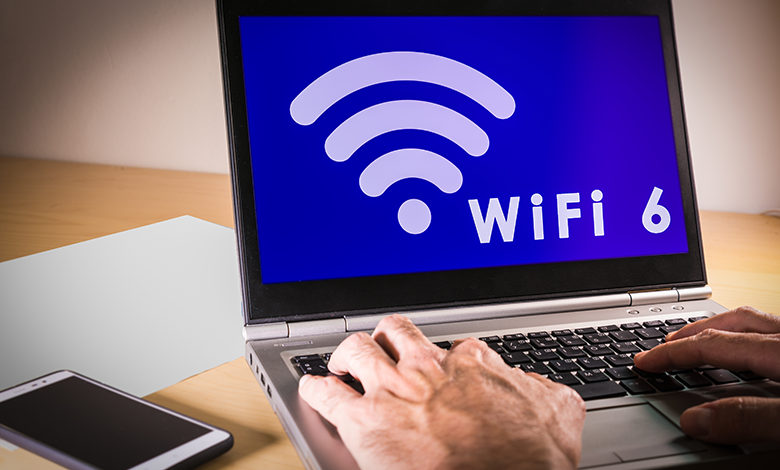As organizations increasingly rely on network connections to deliver customer experiences, power employee productivity suites, and run systems that gather and relay real-time data, Wi-Fi has become an essential part of the public agency’s technology platform.
Yet with increasing demands for speed and bandwidth, there’s been a push for further innovation in the space. High-Efficiency Wireless (HEW), marketed as Wi-Fi 6, is the next generation of wireless technology and it’s faster than anything we’ve seen before. However, Wi-Fi 6 offers a range of features and advantages that go beyond increased speed. Here’s a closer look at Wi-Fi 6 and how public sector agencies can make the most of this emerging technology.
Related: Four Technology Trends in the Public Sector
Understanding Wi-Fi 6 Versions
Wi-Fi 6 is the newest innovation in wireless access. Most agencies currently have access to Wi-Fi 5, the common term for 802.11ac technologies released in 2014. Five years later, we’re beginning to see the release and uptake of Wi-Fi 6. It’s versioning, developed by Wi-Fi Alliance, is referenced as 802.11ax.
The Wi-Fi version is relevant to several things, including access points that run your wireless network, speeds your devices can access, and how seamlessly you can deliver experiences over Wi-Fi. Many experts predict bandwidth intensive software applications will soon include Wi-Fi standard recommendations, when faster Wi-Fi impacts user experience or software function.
Speed: The Most Salient Improvement
If you’re wondering why Wi-Fi 6 matters, one contributor to Network World astutely notes: “the fervor is warranted because it is the first Wi-Fi standard that has been designed with the premise that Wi-Fi is the primary connection for devices rather than a network of convenience.” Increasingly, individual users and entire systems are connecting to Wi-Fi rather than plugging in. Designing Wi-Fi as a primary network, rather than a secondary or supplemental one, has a significant impact on the projected performance.
The biggest improvement Wi-Fi 6 offers is faster speeds. The next generation of Wi-Fi is anywhere from four to ten times faster than current offerings, and has more available channels to alleviate additional issues like congestion. From a user perspective, this will be a significant experience difference. In real terms, Wi-Fi 6 can reach speeds up to 9.6 Gbps, compared with 3.5 Gbps on current generation Wi-Fi. That’s mostly theoretical, as devices and programs rarely access peak speeds, but the demands are changing. Wi-Fi 6 lays a foundation for what devices and software may require for maximum performance in the future.

Eliminate Congestion and Improve Throughput
Have you ever experienced a slowdown to your Wi-Fi network, when multiple users are trying to access bandwidth? Consider attending a conference and the keynote speaks. As attendees check their email, record and post videos, or share data and sound bites on social media, the Wi-Fi performance can grind to a halt. Congestion can dramatically slow down network performance. Wi-Fi 6 is designed to help overcome all this. In fact, one source suggests this new technology can improve the average throughput per user in a congested environment by up to four times.
As Network World notes, one of the biggest issues Wi-Fi 6 solves is network congestion. They write, “The bigger problem with Wi-Fi is congestion and how current Wi-Fi handles lots of people trying to do wireless things and overcrowding the network. The ax standard solves these problems and others by completely redesigning how Wi-Fi works and taking some best practices from LTE.“
Better Battery Life With Wake Time Targets
Another benefit of Wi-Fi 6 is an improvement in battery life performance. Connecting to Wi-Fi networks can quickly drain batteries, especially when a device is moving in and out of range. With a wider range and new features, next generation wireless promises to be less of a burden. One way Wi-Fi 6 is accomplishing this is through something called “wake time targets.”
Wake time targets allows the access point to communicate with devices. It will notify devices of how long the Wi-Fi signal can “sleep” between receiving transmissions, and exactly when it will need to be turned on to be contacted again. These moments of downtime between transmissions will go a long way toward prolonging the life of your laptop, tablet, and smartphone. It also has performance implications for larger network devices.
Getting Started with Wi-Fi 6
If you’re planning to upgrade your agency’s wireless network, it may be time to consider Wi-Fi 6. The first step is incorporating access points that are designed to support Wi-Fi 6. Some are already on the market, with new access points and accessories rolling out in the year ahead. Many individual users are wondering how to take advantage of this. It’s important to remember that the ability to access Wi-Fi 6 requires individual devices—like a smartphone, for example—have the right hardware. As users upgrade their devices over time, these features will begin to align with the new standard.
For public agencies that rely on wireless networking, Wi-Fi 6 is an emerging trend that will increasingly take hold in the future. It’s great news, with faster speeds, solutions for congestion, and better service delivery for a range of devices. As you assess future network plans, make sure to evaluate whether a shift to Wi-Fi 6 can help you achieve your larger technology goals.

